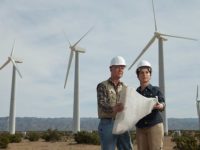In my youth, the year 2020 was a comical setting utilized only in science fiction movies. Today, it’s six months from a reality. While the current decade lacked a moniker (seriously, how do we reference 2010-2019?), the next decade will carry numerous nicknames, including The Roaring ‘20s, the Tipsy ‘20s, etc. Here’s another to consider: “The Decade of the Retrofit.” Sure, it doesn’t quite roll off the tongue, but hang with me here.
A ‘New’ New York City
“The Year of the Retrofit” first gained notoriety when Costa Constantinides, chair of the New York City Council’s Environmental Protection Committee, uttered the phrase following the council’s 45-2 passing of the Climate Mobilization Act, (Intro 1253-C), in April. The 1253-C bill will require all buildings in New York in excess of 25,000 square feet to stay below certain carbon emissions limits, which vary by building type and size.
Buildings not meeting the law will pay an annual penalty that increases with building size and the amount of structures that exceed set fossil fuel use targets. For example, a 30,000-square-foot residential building operating substantially above its energy target would pay $60,000 for every year it exceeds the standard.
The move, which will become effective in 2024, is part of Mayor Bill de Blasio’s 80x50 effort to reduce the city’s carbon emissions by 80% by 2050. The 1253-C legislation further accelerates this effort by requiring large buildings to slash their greenhouse gas emissions by 40% by 2030.
De Blasio’s administration demonstrated the need through the city’s “Inventory of New York City Greenhouse Gas Emissions in 2015” report, which states that buildings were responsible for 67% of citywide greenhouse gas (GHG) emissions through the use of natural gas, electricity, heating oil, steam, and biofuel. The city, which boasts an inventory chock full of apartments heated by antiquated boilers, glass-walled skyscrapers with single-stage cooling systems, and brick buildings scarred with the pockmarks of PTACs, is overdue for an energy overhaul, and this mandate should bring a Cheshire cat-sized smile to the faces of NYC-area engineers.
Nationwide Epidemic
Leaky buildings aren’t relegated to NYC. According to the U.S. Green Building Council, 39% of the nation’s emissions come from commercial and residential structures.
Emission legislation isn’t consigned to New York either. Last year, former California Gov. Jerry Brown signed an executive order that targeted statewide net-zero carbon emissions by 2045.
On Jan. 18, Washington, D.C., Mayor Muriel Bowser signed the Clean Energy DC Omnibus Act of 2018. The law includes a mandate to move D.C.’s entire electricity supply to renewable energy sources within the next 13 years. By 2032, the nation’s capital also intends to phase in the country’s first 100% renewable portfolio standard for building energy use and cut greenhouse gas emissions in half. These are just a few of the bills blooming all over the U.S.
Engineering Opportunities
I’m not here to debate the merits of climate change or whether city, state, or federal legislators should restrict the use of fossil fuels or regulate “carbon taxes.” My aim, however, is to highlight the abundance of jobs and design opportunities these regulations will create.
De Blasio’s office reports the 80x50 initiative will create 17,000 building retrofit jobs by 2035. Washington, D.C.’s, Clean Energy law is expected to significantly increase the region’s existing 12,000 efficiency and 1,500-plus renewable energy jobs.
Today’s engineering professionals have been gifted a ripe opportunity to reshape the rotting infrastructure of not just the Big Apple but nationwide. The 2020s are upon us, and it’s your responsibility to paint the new face of the built environment.
Utilize the opportunity afforded via the Decade of the Retrofit to ensure the buildings of the next century are operating at peak efficiency.
Register for our free webinars at http://webinars.esmagazine.com, where users can also view any webinar from the last year on demand in our archive. Here is a look at the next presentation on our calendar.
June 27
Getting Started with VRF
Presented by Kevin Miskewicz, director, commercial product planning, and Victor Chael, commercial area manager, Mitsubishi Electric Trane HVAC US LLC
June 6-8
American Institute of Architects (AIA)
Las Vegas
https://conferenceonarchitecture.com/
June 21-24
American Boiler Manufacturers Association (ABMA)
Asheville, North Carolina
https://www.abma.com/summer-meeting
June 22-26
ASHRAE Annual Conference
Kansas City, Missouri
https://www.ashrae.org/conferences
June 24-26
Women in the Mechanical Industry Conference
Rosemont, Illinois
https://www.mcaa.org/events/calendar/women-in-the-mechanical-industry-conference/





